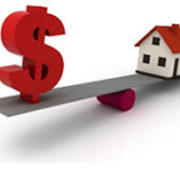The “New” Government Pensions Loans Scheme – Do I Need Extra Income?
It’s time to review the Pension Loans Scheme (PLS), how it operates, how it can assist either long term or short term and tell you about some new features.
Why did I think it is worthwhile revisiting the Pensions Loans Scheme (PLS)?
A couple of reasons.
1. The Government announced a couple of changes to the scheme in the May budget.
2. I have been receiving questions on how the PLS operates.
3. The increasing value in age pensioners homes.
Let us have a closer look at point 3 first.
Domain’s December 2020 quarterly house price report shows the average price for a home in Australia in December 2020 was $852,940. Melbourne was very close to $1 million, and in Sydney, the average price was more than $1.2 million.
In the first 5 months of this year, the average increase in property across all capital cities was close to 10%, meaning all the average values that I mentioned in the last paragraph have all increased by close to 10%.
So, how does this affect the average age pensioner in Australia? It does not; however, with the increase in the value of their home and the land that it is built on, pensioners may see increases in their annual home insurance and rates.
The government is very keen for retirees whose cash reserves maybe dwindling to access the increased equity in their home to improve their lifestyle, increasing their spending and reducing their reliance on the age pension, which all helps the economy.
The ability to sell your home and buy a smaller property and deposit the difference into superannuation – Downsizer Contributions – is one measure.
However, speaking to age pensioners there appears to be two issues with this measure which they are not all that keen on. Firstly, many have lived in their current home for a long time and are very comfortable where they live. It is a home full of memories. Secondly, selling and moving to a smaller home, and having more money in superannuation, can reduce their age pension, which they do not feel comfortable about.
Let us now look at points 1 and 2.
What does the PLS have to offer? The PLS provides the ability to access the equity in your home, increasing the amount of age pension you receive on a fortnightly basis to an amount of up 150% of the full age pension. For self-funded retirees who need to increase their income, they too can also access the PLS and apply for a fortnightly payment of up to 150% of the full age pension.
In practical terms what does this mean? As an example, a single age pensioner on the full age pension of $952.70 could access the equity in their home and receive up to an additional $476.35 per for fortnight. For a single self-funded retiree, they could access the equity in their home and receive up to $1,429.05 per fortnight.
How much of the equity in my home can I access?
This depends on your age, the value of your property, and how much of the equity you wish to maintain. To explain the process in simple terms I will use an example.
A single 75-year-old in receipt of the full age pension, who has a home valued at $850,000, who would like to retain equity in their home of $350,000. The following formula is the basis for the maximum loan amount:
$3,750 (age component value)* x (($850,000 – $350,000)) / $10,000 = $50,000. This is the maximum amount of the loan.
In practical terms, it means that our single age pensioner could receive an additional $476.35 per fortnight at the current interest rate payable of 4.5% on the loan for approximately 4 years.
This maximum loan amount can be recalculated and increased on a yearly basis, based on an increase in the value of the home and the increase in the pensioner’s age.
The payments made under the PLS are not taxable and are not assessable by Centrelink under the income test.
What are the changes to the scheme that the government announced in the May budget?
1. A person can now apply for a lump sum payment up to the maximum annual amount applicable to their situation. In the example above, this would mean that our single age pensioner could apply for a lump sum on a yearly basis totalling $12,385.10.
The downside to this advance lump sum is that it effectively reduces the extra fortnightly loan payments that they were receiving, after lump amount is paid and the total reaches $12,385.10 for the year to zero dollars.
2. The second announcement was the introduction of a ‘No Negative Equity Guarantee’, meaning that borrowers under the PLS, or their estate, cannot owe more than the value of their property.
I have provided a lot of information that is quite complex to understand. What I would like to point out is that the PLS gives age pensioners and self-funded retirees an extra avenue of accessing the equity in their home with a very credible lender “the Government” at a competitive interest rate of 4.5%.
Before you rush out and sign up for a loan under the PLS, make sure you understand how the scheme works in its entirety, and the pros and cons with regards to your own circumstances. The best way to do this is to speak with a professional.
*The age component value is based on a person’s age and will increase as a person grows older.
Source: Mark Teale | Centrepoint Alliance


